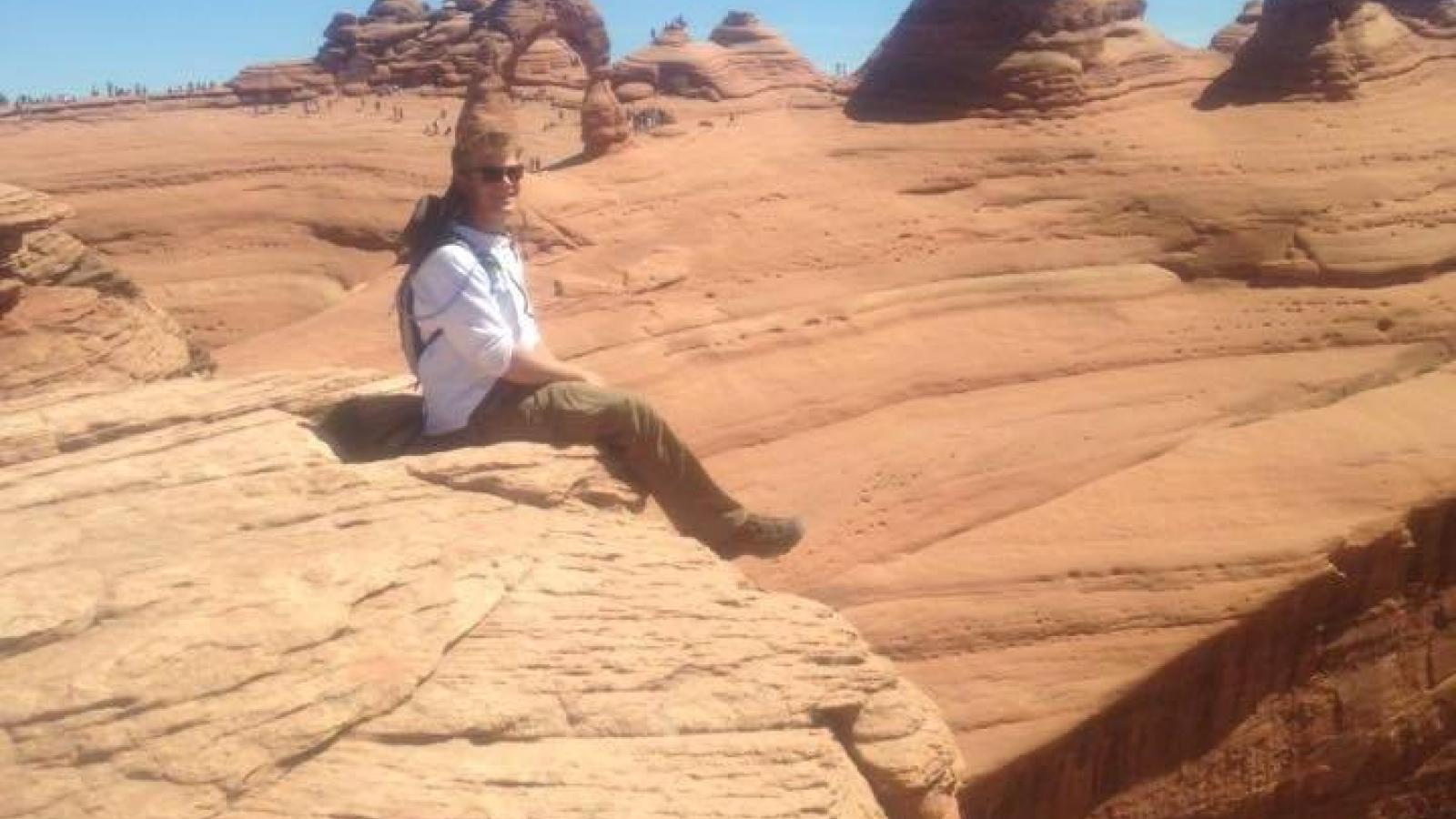Alumni Change Lives featuring Brent Lary
Brent Lary is a recent MS graduate (summer 2020) from SES advised by Tom Darrah. Here, he shares how Friends of Orton Hall helped him further his studies.
Friends of Orton Hall provided me funds to present my research at the Geological Society of America Annual Conference in Phoenix, AZ. The funds paid for my conference registration, lodging, and travel, which allowed for me to present my oral talk titled "Identifying hydraulic fracturing “sweet spots” using radiogenic noble gases". Measuring the production ratio of these isotopes within organic-rich shales provides insight into conditions, pathways, and mechanisms of past and present fluid migration. U and Th are relatively abundant in organic-rich shales and over time these elements radioactively decay. This mechanism emits alpha particles (otherwise known as 4He), which are ultimately embedded within a mineral grain (e.g., quartz). Rarely, a 4He atom will strike an 18O atom within an oxygen saturated crustal mineral, and nucleogenically produce 21Ne. This results in a globally constrained 4He/21Ne production ratio of 22 x 106. As these gases build up within a mineral, a concentration gradient is formed between the grain and the surrounding pore space. In an attempt to maintain equilibrium, the gases will want to diffuse back and forth between the two phases, but can only do so if the formational temperature exceeds the closure temperature of the mineral and gas pairs, the temperature at which diffusional release rates become irrelevant on a geologic time scale. Within quartz, the closure temperatures for helium and neon are ~12°C and ~80°C, respectively. Therefore, deviations from the globally constrained 4He/21Ne production ratio provide insight into where fluids have migrated (via brittle failure) and the temperature at which migration occurred. The long-term scope of this project is to implement this method on horizontal wells to identify where fluid accumulations or losses are within the targeted shale from drill cuttings alone. If successful, this method provides a relatively cheap and quick way to identify where hydraulic fracturing stages should be placed within a borehole and what areas should be left unstimulated. The method has the potential to allow for the extraction of more hydrocarbons, while reducing the cost, time, energy, and resources that are currently required. I would like to thank Friends of Orton Hall for helping me to strengthen my presentation and networking skills by vocalizing this idea to experts within the unconventional energy field. GSA was a crucial step to my professional and scientific development.
The School of Earth Sciences relies on the generous support of our alumni and friends to provide programs, scholarships and facilities that enrich the experience of our students, provide life-changing opportunities, and enable world-changing discoveries. The Friends of Orton Hall gifts are distributed to students in support of degree research work. If you are interested in giving to support the Friends of Orton Hall or other funds, please visit our giving page.

